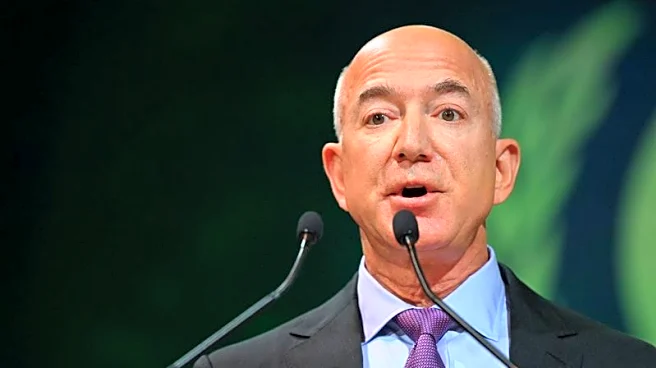What's Happening?
Ola, a prominent ride-hailing company, has significantly reduced its workforce by over half, cutting employee numbers from 886 in April to 376 by August 2024. This decision is driven by increasing competition in the market, particularly from rivals such as Rapido and Uber. Rapido's expansion into the four-wheeler segment has contributed to a decline in Ola's market share, which has dropped from approximately 43% last year to between 25% and 30%. Meanwhile, Uber maintains a market share of around 45%. Ola's layoffs are part of a broader trend in India's mobility sector, where companies are adjusting their strategies to balance growth with financial discipline. The company is focusing on critical roles in operations, technology, and business strategy while reducing redundancies in non-core functions.
Why It's Important?
The reduction in workforce at Ola highlights the intense competition within the ride-hailing industry, particularly in India. As companies like Rapido and Uber continue to expand, Ola's market share has been affected, prompting the need for strategic restructuring. This move underscores the challenges faced by companies in maintaining profitability while navigating a competitive landscape. Ola's focus on automation and operational efficiency is crucial for sustaining growth and adapting to market dynamics. The company's exploration of new revenue streams, such as subscription models and fleet partnerships, indicates a strategic shift to diversify income sources and strengthen its competitive position.
What's Next?
Ola is expected to continue its focus on technology and operational efficiency to navigate the competitive pressures in the ride-hailing sector. The company may further explore subscription-based models and fleet partnerships to diversify its revenue streams. As competition intensifies, particularly in smaller cities, Ola's strategic push to streamline operations will be critical in sustaining growth. The company's ability to adapt to shifting market dynamics will be essential in maintaining its position against rivals like Rapido and Uber.
Beyond the Headlines
The layoffs at Ola reflect broader trends in the mobility sector, where companies are recalibrating their strategies to balance growth ambitions with financial discipline. This development raises questions about the sustainability of rapid expansion in the ride-hailing industry and the need for companies to prioritize efficiency and innovation. Ola's strategic focus on technology and operational efficiency may set a precedent for other companies facing similar competitive pressures.











